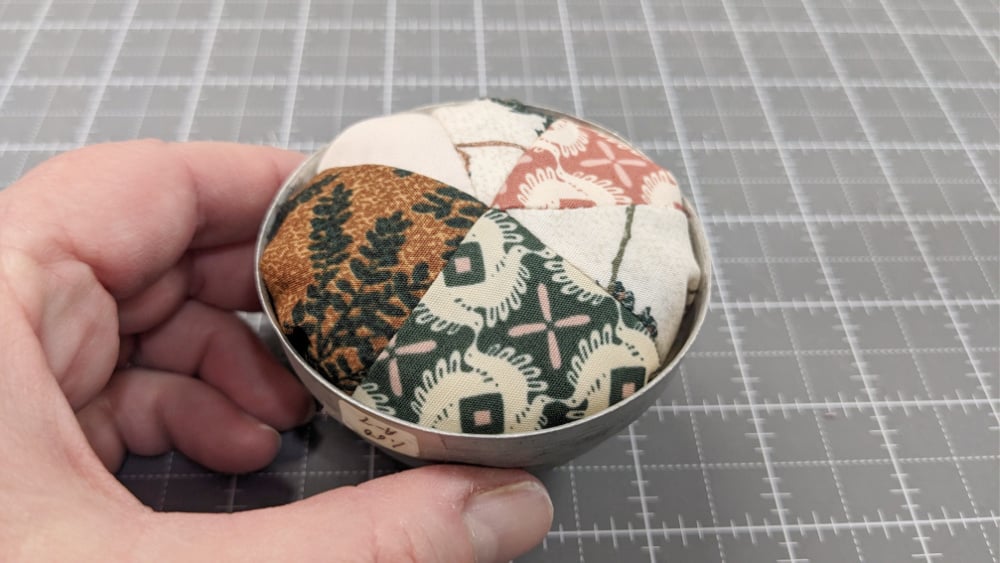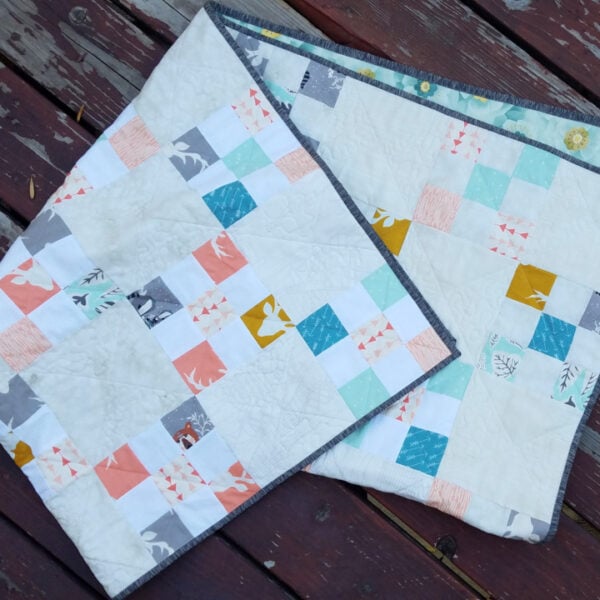When it comes to box corners, there is kind of blankness that overcomes me. I mean, how do you really sew a box corner? For some reason every time I use this, I have to re-learn or stop and think about it! After sewing up more than a few sewing projects,
I have come to the conclusion that there are 3 basic Box Corners. Each of them gets you to the final result, but having options can be handy. Depending on the thickness of your fabric, bulkiness of the seams, or whatever, with 3 options for sewing box corners you can find your favorite, or try something new!  Adding this little feature can give flat pillows, cushions and bags some dimension and depth. You will want to be consistant on all corners that you use these methods on. Keeping consistant and accurate will make your finished item look great. Pay attention to your markings…and double check them before you cut!
Adding this little feature can give flat pillows, cushions and bags some dimension and depth. You will want to be consistant on all corners that you use these methods on. Keeping consistant and accurate will make your finished item look great. Pay attention to your markings…and double check them before you cut!
A box corner on a couch cushion is where the cushion get’s its thickness. The bigger it is, the thicker the cushion.
A box corner on a pouch or bag determines how much ‘bottom’ you will have. The bigger it is, the larger the bottom of the bag becomes. {this can be tricky as adding width here will take away from your height}.
3 ways to Sew Box Corners:

1- sew into seam For some reason I find this one the trickeyest…but when I look at the picture, it’s like duh. 🙂 The steps here are to fold the bottom in on itself, which then catches it in the side seam…boxing the corner. Brilliant! Great tutorial found here.
2- cut the corner The steps here require you to cut a little box totally out of the corner. The tricky part to this is that you will open up the cut part, re-align the edges so the seam is straight again, and then sew. Remember that this new straight edge will be the size of the boxed corner. I typically see the squares cut at 1″ – 2″ big. Great tutorial found here .

3- sew the corner For most of us, this is the typical technique for sewing a box corner. You open the bottom, placing the side seam right in the center. Mark with a pencil a line– the length of the line will be how large the bottom of the bag will be. If you’d like to ‘audition’ the size, place pins along the line and turn right sides out. Adjust if needed. Sew on the drawn line, making sure it the seam doesn’t shift. Tutorial for this technique here.
Do you have a favorite way to get those bottoms or corners perfect? Let us know in the comments-

Becky Jorgensen is the creative quilter behind Patchwork Posse, the Patchwork Planner and her online quilt group Patchworkers Plus. You can find her patterns in books, magazines, and her quilt membership. Gather your quilting supplies, organize your sewing space, explore the process of disappearing quilt blocks, or finish a free quilt pattern. I'll help you use what you have, finish what you start and make your quilting journey fun!
Follow me here: Facebook, Pinterest, YouTube







Hello Becky, I have made alot of bags using techniques 2 and 3, but the 1st one is a new one for me. I am going to use this type of corner on some t-shirt bags I am making for chair/book holders for my granddaughters classroom, I am sure they will come out roomier……….
Great idea and kind of simple too- has a nice finished look, I am sure it will work perfect for those projects.
Ooh thanks so much for this post! I always sew my box corners the third way, but I really like the first option too, looks pretty easy! Pinning this for future reference, and thanks so much for sharing it at my link party!
Your tutorials make it look so easy! Thank you!
They do look easy don’t they? Not sure why I get easily confused when I am sewing them!
Two and Three make the same corners. That is, if when you are done with Three you cut off the extra bit (the point outside the seam) you’ll find that you have the little square Two has you cut out first. Myself, I prefer to sew that triangle down onto the “floor” to make it sturdier.
I can’t see an reason to do Two — it just means you have another raw edge to sew!
Thanks for the info.
#1 is new to me too – thank you!
I sew a lot of “market bags” to use as gift bags. But my addition to them is this;
Measure the finished base of your bag and cut and piece of door ply (very thin plywood) to fit the base of the bag. Cover this board in the same fabric as the bag and press down into the inside of the bag. This makes it more sturdy for carrying heavier items!
Great idea Lorraine, thanks for sharing!
awesome thank you! i couldnt figure it out! this helped me a lot!!!
you are so welcome!
I have been putting off making a tote bag out of the coolest calf feed bag I’ve ever seen, for just this reason – fear of screwing up the corners! Thank you! I read through your post and watched your tutorials and I’m off right now, in fact, to try it on a scrap piece of fabric. I’ll tackle that feed bag tomorrow after church, if it works! THANK YOU!!!
Can you give me some help on sizing of fabric. I understand the idea of cutting the triangular corner off after sewing the sides and bottom but have no idea how to calculate how the size of fabric I need! I want to make a cube that is 8inches high and 6 inches on all four sides. Help!
That I really don’t know. I don’t make bags with that large of a base. You might want to take some larger pieces of fabric and fold, pin them where you would sew to see what kind of size the pinch or box pleat needs to be. sorry i can’t be more help than that.